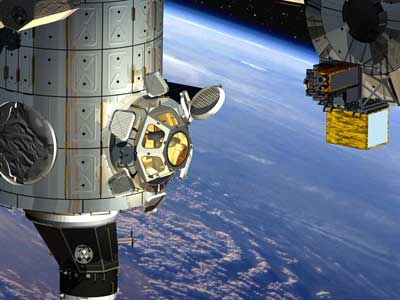The European Space Agency takes care of the view reflected in the windows of the International Space Station
ESA press release

Simulation of the roof dome. Credit: ESA
The end of the development phase of the European Observation Unit for the International Space Station, or "roof dome", will be celebrated in a ceremony at the Alanya Spazio facility in Turin, Italy, on Monday, September 6.
The roof dome, planned for launch in January 2009, is a control and observation tower for the International Space Station. There will be windows in it, which will allow a panoramic view for viewing and guiding operations in the outer part of the space station.
The building, which will have high air pressure, will contain command and control stations and other tools, which will allow crew members to communicate with other crew members on the station or during spacewalks. Another use of the roof dome will be to control the robotic arm of the station in order to connect and assemble different parts of the station. The roof dome will also be used for observations of the Earth and space.
The roof dome project is the result of a joint trade agreement between the European Space Agency and NASA, under which the European Space Agency provides the roof dome in exchange for trips on the space shuttles to transfer European equipment and experiments to the space station.
The completion of the dome marks the end of the development phase of the project, which began with the signing of the contract on the roof dome between the European Space Agency and Alania Spazio on February 8, 1999. Within the contract, Alania Spazio acted as the main contractor and took responsibility for the coordination between six other companies: CASA (Spain ), APCO (Switzerland), SAAB Development Ericsson and Lindholen (Sweden), EADS Space Transportation (Germany) Voorhardt (Belgium).
The dome, which weighs 1.8 tons, is now ready to be transferred to the Kennedy Space Center in Cape Canaveral, Florida, United States. There she will undergo a series of final tests before being moved into storage for four years, at the end of which she will be launched.
translating:
Dikla Oren
